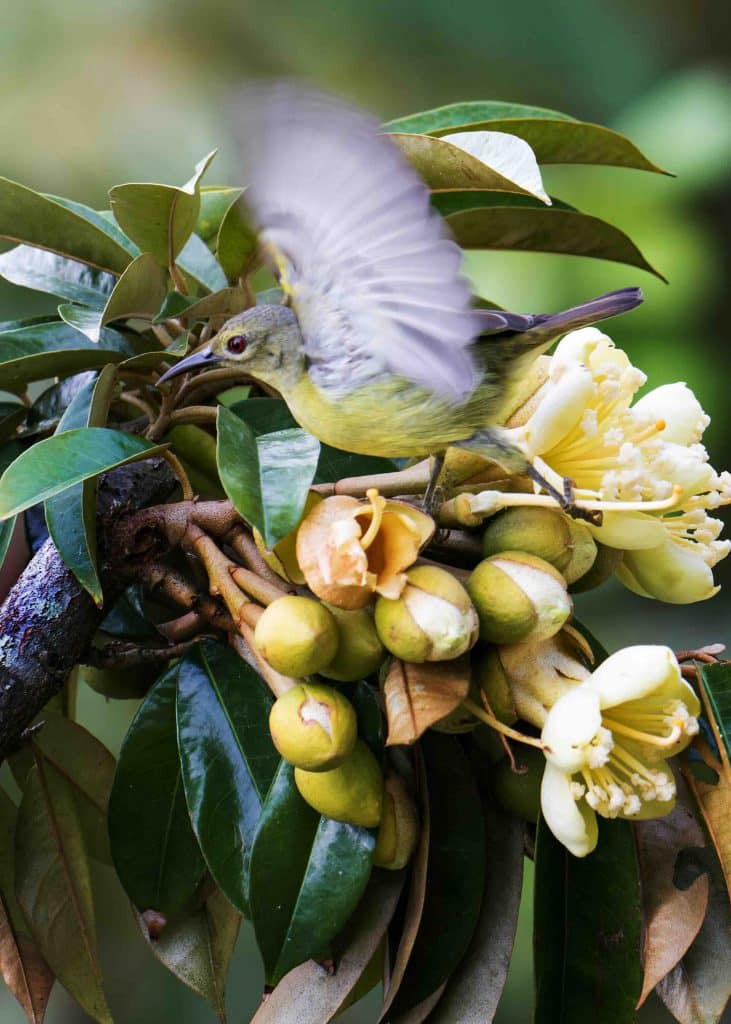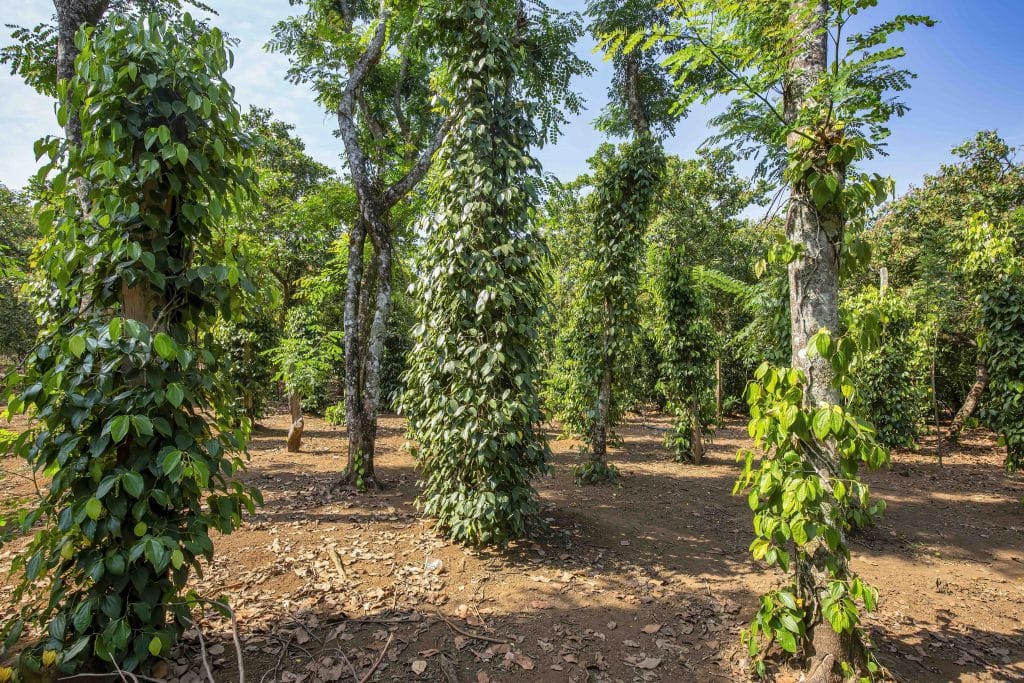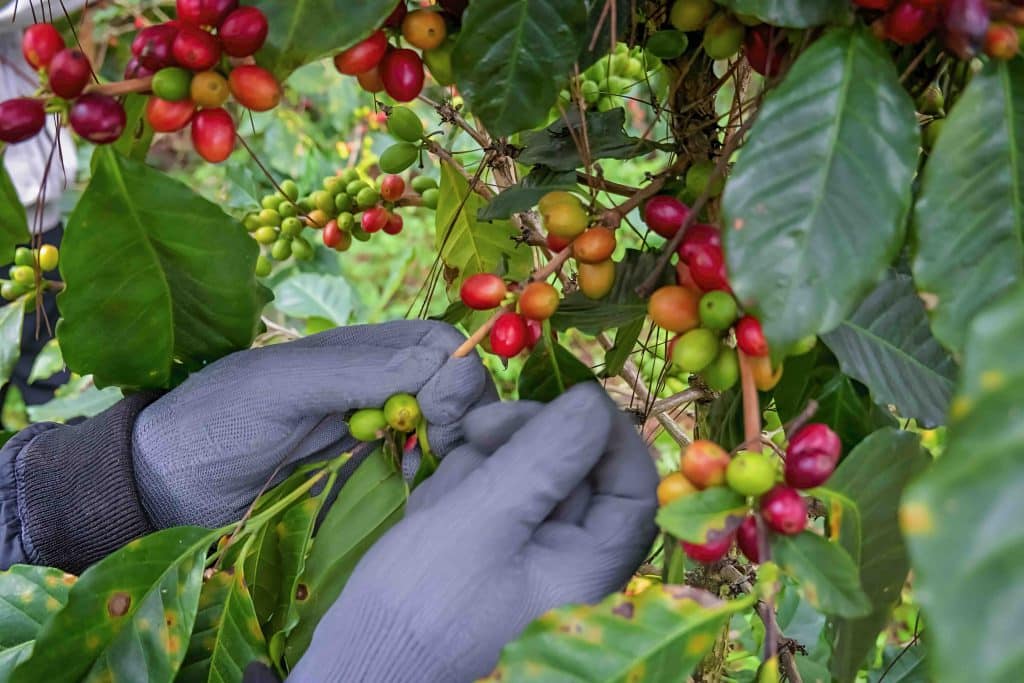Story: Quynh Thuong
Photos: Quang Ngoc, Dao Canh
Vietnam is tapping into an increasing number of its “fruitful gold mines”, earning billions of U.S. dollars in export revenue.
In 2024, the country marked a breakthrough, with fruit and vegetable exports reaching a record high of over USD 7 billion, up more than 27% compared to the previous year. These figures are more than just numbers, revealing that Vietnam is no longer on the sidelines of the high-value agricultural game but has officially stepped onto the global stage, setting its sights on an ambitious goal of USD 10 billion in the near future.
Once primarily known as a “rice powerhouse,” Vietnam is redefining itself as a hub for high-quality agricultural products—each with its own distinct identity and unique value.

Billion-dollar industries
Coffee, the iconic agricultural product of Vietnam’s Central Highlands, turned a new page in 2024, with export revenue reaching USD 5.62 billion and export volume exceeding 2 million tons. For the first time, Vietnamese coffee prices reached a global peak, creating major opportunities for value-added processing and the advancement of a national brand.
Coffee exports increased across all of Vietnam’s top 15 markets. The EU remains the largest destination for Vietnamese coffee, with Germany, Italy, and Spain leading the way, holding market shares of 11%, 8.1%, and 8%, respectively.
Though less high-profile than coffee, Vietnam has been at the forefront of the global cashew nut export market since 2006. In 2024, the industry surpassed USD 4 billion in export revenue—rising from years of holding just above USD 3 billion—once again reaffirming Vietnam’s dominance in the global cashew market.
Meanwhile, pepper, often referred to as Vietnam’s “black gold,” officially entered the billion-dollar export club for the first time in 2024. The country exported nearly 260,000 tons, generating USD 1.32 billion in revenue. Despite softened demand in several markets, Vietnam maintained its position as the world’s number one pepper exporter, holding a commanding 60% share of the global market.
When discussing Vietnam’s billion-dollar agricultural exports, durian stands out. Just over two years after gaining official export approval to China, Vietnam’s “king of fruits” reached USD 3.3 billion in export revenue in 2024, accounting for nearly 50% of the country’s total fruit and vegetable exports. Production is projected to grow by another 13% in 2025, signaling a promising year ahead for Vietnam’s fruit and vegetable sector.
The explosive growth of these “gold mines” has helped boost the total export value of Vietnam’s key agricultural sectors to USD 32.8 billion, an increase of 22.4% compared to 2023, far surpassing the target set by the Ministry of Agriculture and Rural Development (now the Ministry of Agriculture and Environment).
Mr. Dang Phuc Nguyen, Secretary-General of the Vietnam Fruit and Vegetable Association, commented: “In 2025, fruit and vegetable exports are expected to maintain this record-breaking momentum, with projected growth of over 10% compared to 2024.”

“Unlocking the gold mines”
From small rural farms to million-dollar international contracts, Vietnamese agricultural products are steadily shaping a growth story defined not just by volume, but by value, brand identity, and a bold ambition to compete on the global stage.
Prime Minister Pham Minh Chinh emphasized: “Agricultural exports have reached USD 62.5 billion, with a trade surplus of USD 18 billion, accounting for over 70% of the nation’s total surplus. That is real, tangible income generated by the hands of Vietnamese farmers.”
These impressive results stem from the concerted efforts of ministries, local authorities, businesses, and the unwavering dedication of farmers. From shifting production mindsets toward quality and establishing standardized raw material zones to practical measures like issuing planting area codes, negotiating market access, and promoting branding—each step has contributed to successfully “unlocking” Vietnam’s agricultural “gold mines”.
Durians, coffee, cashews, and pepper are making strong market inroads, driven by well-structured production strategies, diversified export markets, and record-high selling prices. For durians in particular, Vietnam’s off-season cultivation approach—enabling year-round harvests rather than seasonal ones—paired with strict quality control, has helped the fruit maintain a solid presence in the Chinese market while gaining recognition in demanding markets like the United States, Japan, and South Korea.
According to Mr. Nguyen Quang Hieu, Deputy Director of the Department of Plant Production and Protection, Vietnam has successfully established and expanded many concentrated durian farming areas with substantial output. The country’s Ri6 and Dona durian varieties have become key export staples. The department is currently rolling out a range of coordinated measures to boost durian exports, including developing standardized cultivation and harvesting procedures adapted to climate change, strengthening legal frameworks for managing growing areas and packing facilities, and conducting training sessions to keep farmers and businesses up to date with the latest import regulations from key markets.
These efforts are not limited to durians. Other Vietnamese agricultural products are also “taking off” thanks to similarly synchronized strategies. In 2024 alone, Vietnam issued 1,194 growing area codes and 175 packing facility codes for fresh fruits such as dragon fruit, mangoes, longans, passion fruit, pomelos, and chili. Each code serves as a “passport” that enables Vietnamese produce to enter high-standard, demanding international markets.

More rising stars
Following durians’ impressive breakthrough, Vietnam’s fruit sector is now seeing encouraging signs from other familiar crops such as bananas, dragon fruit, coconuts, and mangoes. These fruits are poised to become the next billion-dollar export champions in the near future.
Once dismissed as an “easy-to-grow, easy-to-abandon” crop, Vietnamese bananas have made a spectacular comeback, emerging as a new “rising star” in the country’s agricultural exports. In 2024, banana exports reached 2.7 million tons, generating over USD 380 million, a 20% increase compared to 2023. Notably, bananas are emerging as a new phenomenon, as for the first time in a decade, Vietnam surpassed the Philippines to become the largest banana supplier to China, the world’s biggest banana-consuming market.
Vietnamese bananas are also steadily penetrating other promising markets such as South Korea, Japan, Malaysia, and the Middle East, paving the way for comprehensive growth opportunities. If the industry sustains its current annual growth rate of 15–20%, it could very well hit the USD 1 billion mark within just a few years.
Meanwhile, dragon fruit, once hailed as the “queen of Vietnamese fruit exports”, is working its way back into the race. In 2024, dragon fruit exports reached an estimated USD 435 million. The good news is that while the fruit still heavily relies on the Chinese market, it is gradually gaining access to markets in the EU, Japan, and South Korea.
Positive signals from new orders from Europe and Northeast Asia, along with a strategic shift toward higher-value varieties and increased investment in deep processing, are helping dragon fruit move beyond the cycle of “good harvests, low prices” and paving the way for a new phase of value-driven growth.
From a symbol of tropical freshness, Vietnamese coconuts are now stepping into the global spotlight as true “ambassadors” of Vietnamese agriculture, thanks to their distinctive quality, flavor, and increasingly standardized, modern, and professional cultivation and processing systems.
In 2024, exports of coconut-based products, including coconut milk, coconut oil, and desiccated coconut, exceeded USD 1 billion for the first time, reaching nearly USD 1.1 billion. Fresh coconuts continued to lead the way, with a remarkable growth rate of over 25% year-on-year, helping to boost the total export value of Vietnam’s coconut industry to over USD 1.3 billion. This surge is being driven by growing demand in major markets such as China, the U.S., South Korea, and the EU.
Vietnamese mangoes are also gradually strengthening their presence in the global fruit export landscape. With an export revenue of around USD 350 million in 2024, mangoes are now seen as a high-potential commodity, having entered markets like Japan, South Korea, Australia, and the EU. Premium varieties such as Hoa Loc and Yen Chau mangoes are gaining particular favor.
In the wake of durians’ remarkable success, the rise of bananas, dragon fruit, coconuts, and mangoes is not just a triumph of export figures, but a clear indication of the transformation taking place across Vietnam’s agricultural landscape. The stories of these fruits are no longer merely about selling fresh produce; they reflect the journey of turning agricultural products into high-value, knowledge-driven commodities.










